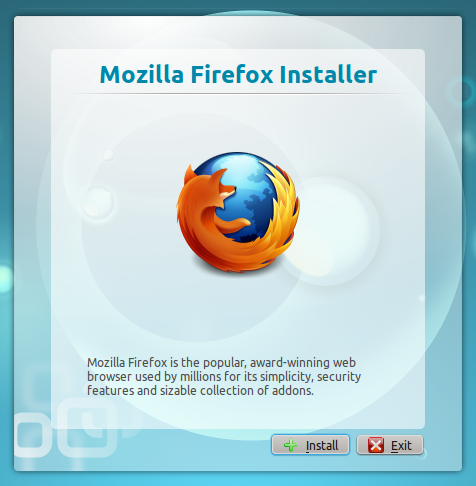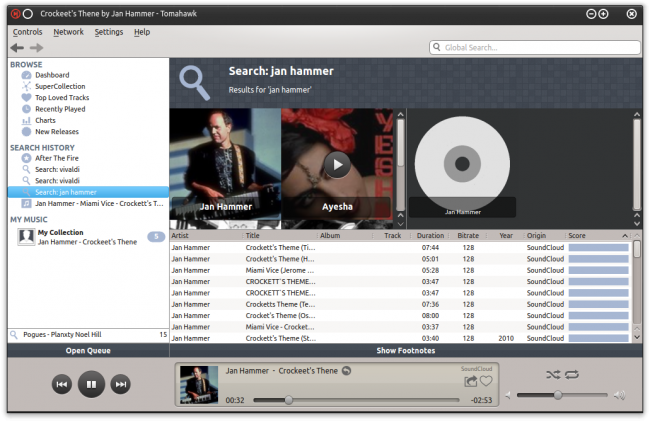Windows 8: How does it compare to Netrunner?
October 29th, 2012 by Luis Augusto Fretes Cuevas
After 3 years Microsoft is ready, or so they say but Intel disagrees, to launch their new operating system. The old proverb goes keep your friends close but your enemies closer, so while Windows 8 isn’t literally an enemy it indeed is the competition, since most computers are sold with Windows included you need to be able to convince some of those users (normally relatively knowledgeable ones) to try, install and replace Windows with, what some of us believe, is a better alternative. So it’s always important to know what’s happening in Redmond, however, more often than not changes to their… Continue Reading
The Browser State
October 15th, 2012 by Dedoimedo
For most people, the choice of the Web browser is a funny formula of I-used-it-first, whatever is installed by default, followed by look and feel, speed, perceived security, and finally, last but not the least, actual functionality. On top of that, users tend to be quite loyal, or rather quite habitual, to their browsers, and they rarely venture about exploring new options and possibilities, even if they might be technologically superior. I’d like to give you an overview of several top browsers in the Linux world and how they stack against one another across the spectrum of basic requirements that… Continue Reading
Editorial: Will 2013 be the year of… Microsoft?
October 8th, 2012 by Luis Augusto Fretes Cuevas
For many years the consensus among “experts” (journalists) has been that Linux wouldn’t ever reach the consumer market, nor would Apple. Recently on a famous and entertaining (yet technically deprived) show On The Verge from the american website known as The Verge, Mary Jo Foley laughed at the idea that Linux could ever be relevant. This is a form of delusion, as I pretend to show in this editorial: The year of Linux has already happened, while its now Microsoft the one crawling to get its own. Surely many readers would dismiss such an assertion based on Microsoft’s share of the PC market,… Continue Reading
KDE TeaTime Video-Podcast
September 26th, 2012 by Admin
KDE TeaTime (KTT) is a new video podcast ran by a bunch of KDE developers who at some point decided to make their private ramblings and discussions in the open just like the software they develop. Right now KTT uses Google Hangouts, because it can be streamed live on YouTube, so everyone can watch it live. The format is around 25 minutes for one episode and one episode planned per week. The content of KTT is going to be different each time but always related to KDE. Each time a main topic is set and will be discussed live about… Continue Reading
Plasma just hit a “Homerun”
September 22nd, 2012 by Luis Augusto Fretes Cuevas
Plasma is KDE’s and therefore Netrunner’s desktop and workspace. I’ve explained what Plasma is and how to change it to your liking in the past. Unlike its competition KDE puts the user in charge of his or her desktop, and in the mobile age of technology, KDE should get an easy and pleasant experience for touch-input devices as well mouse pointing devices, specially when Windows 8 is coming out, and many people migrating from a Windows 8 PC will now have this feature. This is where Homerun hits the scene, developed by Aurélien Gateau and Shaun Reich, whom contribute to Gwenview… Continue Reading
Adding Software Repositories PPA
September 21st, 2012 by Luis Augusto Fretes Cuevas
A screencast explaining the advantages of repositories in Netrunner. And the similarities between this system and the now popular mobile stores. Of course, as title suggests, it’s mainly about learning how to add repositories as well as understanding how useful these are.
Music players shakedown
September 18th, 2012 by Dedoimedo
Playing music is easy, just choose a media player of some sort and fire up a few songs. With the right plugins or codecs installed, you will hear sound pouring from the speakers. Easy. However, finding the right software to suit your needs, taste and mood, and help you organize music – is not. Today, we have a little contest coming up, between Amarok, Clementine, and Tomahawk. Amarok As you probably know, Amarok is a popular music player for KDE desktops, perhaps the most popular. The list of capabilities is truly impressive. Amarok will run on Windows, if you are so… Continue Reading
Meet Web Accounts
September 8th, 2012 by Luis Augusto Fretes Cuevas
As we pointed out last week, Netrunner isn’t just any Linux distribution, it’s a truly web enabled experience. As such it recognizes that in the modern world most users don’t store their contacts or calendars on their local hard drives, rather this type of information is stored in the cloud. Dryland Second Edition provides the necessary tools to be useful in this new world, not only by offering ways to sync your cloud stored data with it, but rather making it as straight forward as possible. While applications like Kontact have always support this kind of integration, these features were… Continue Reading








